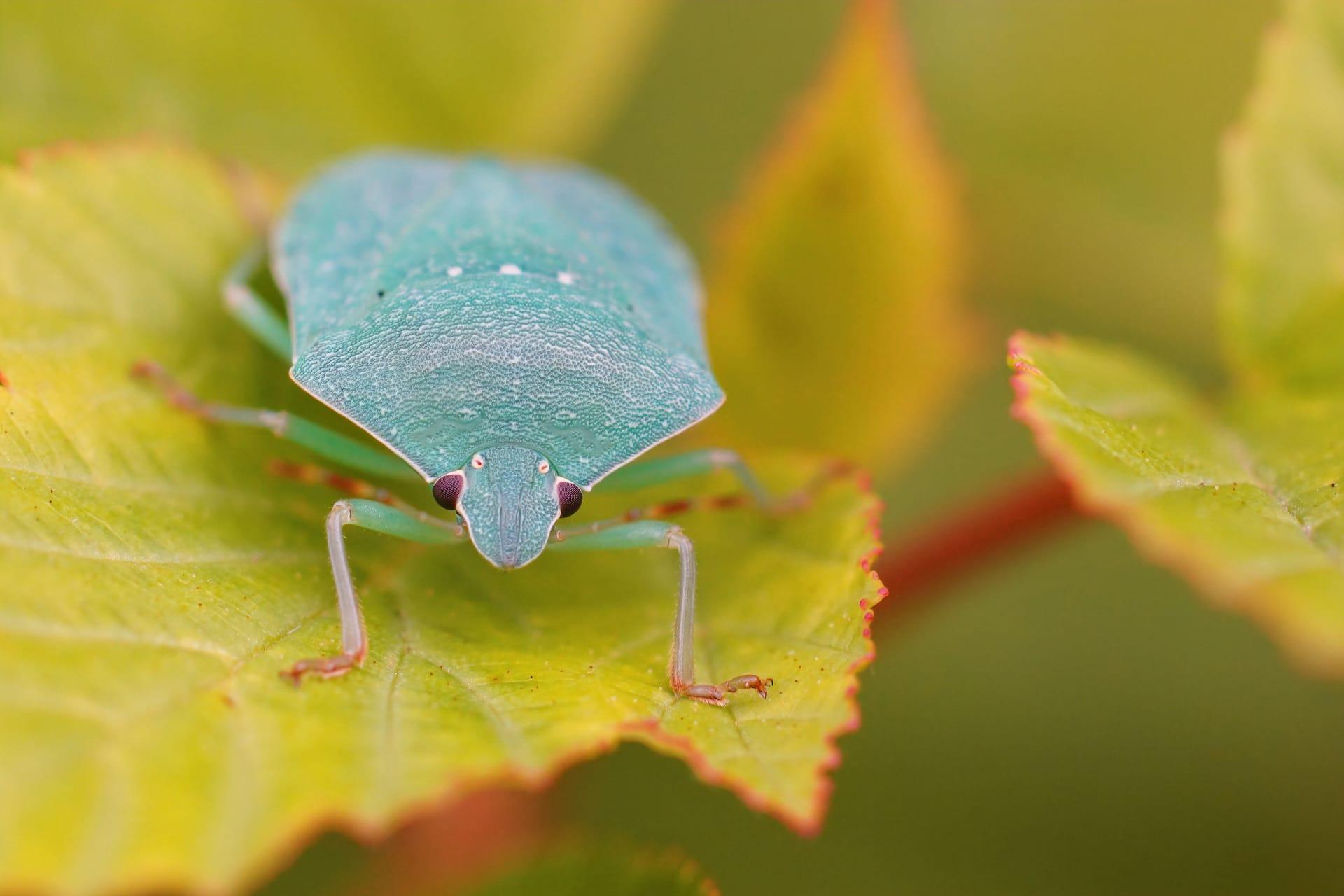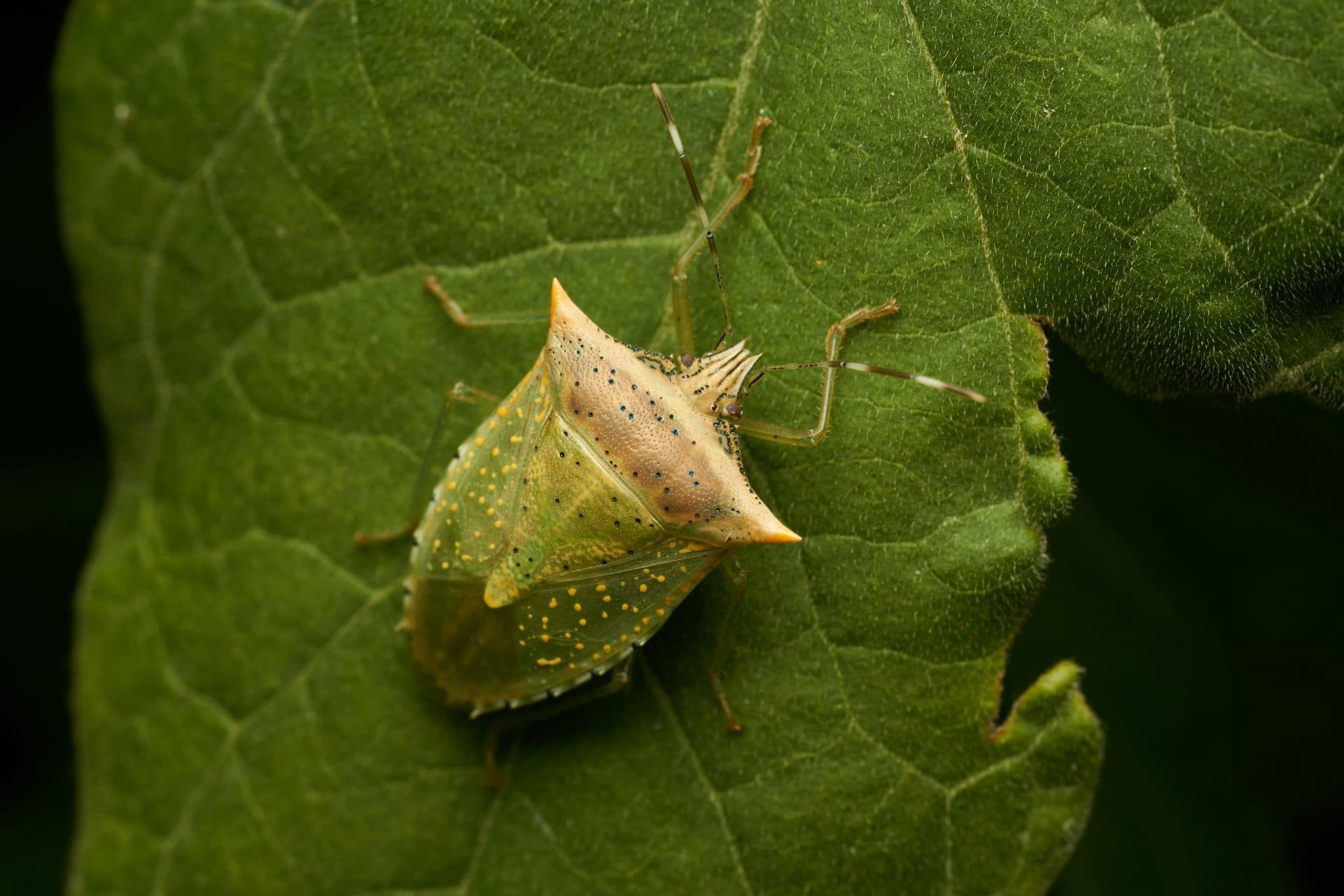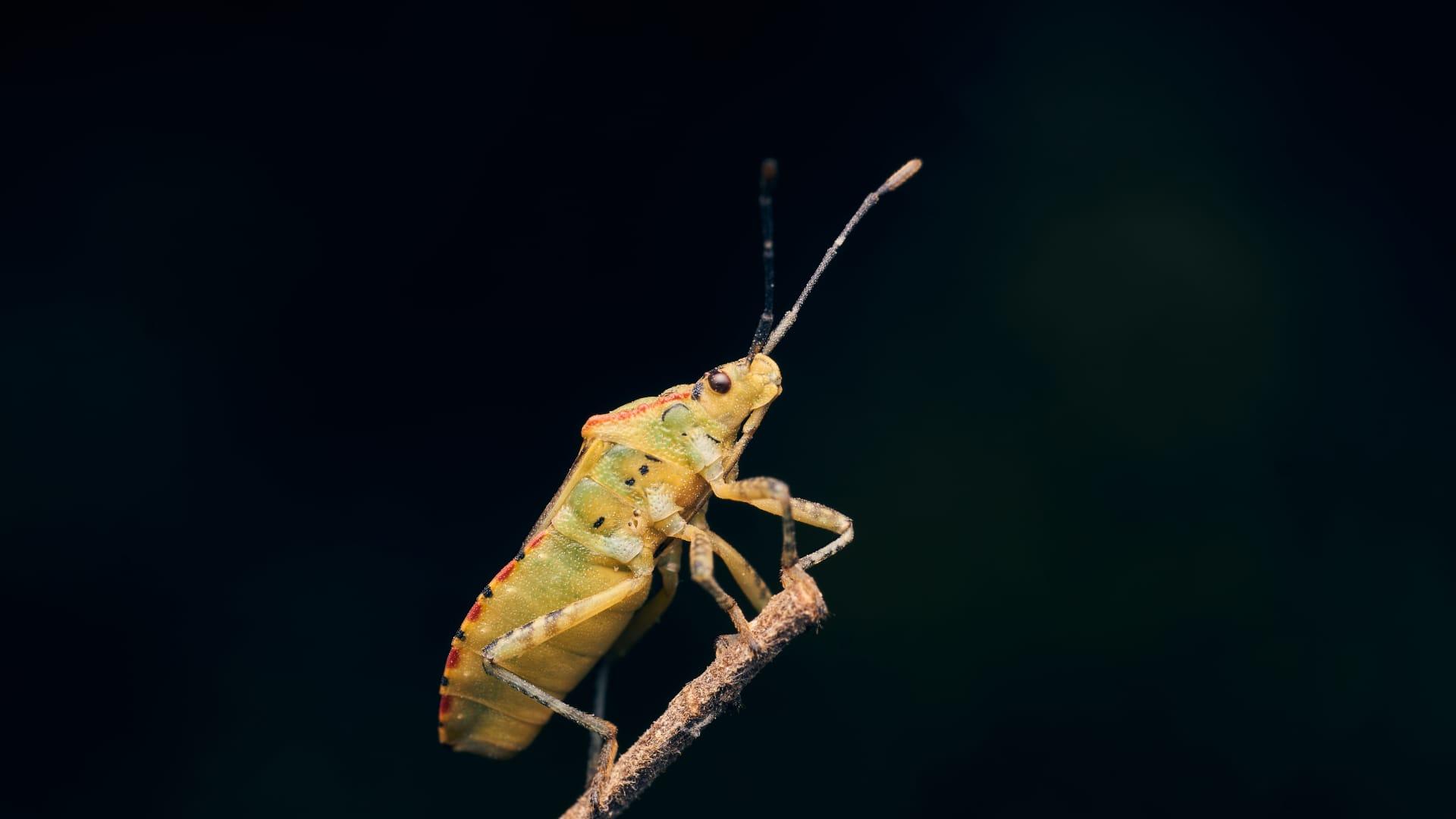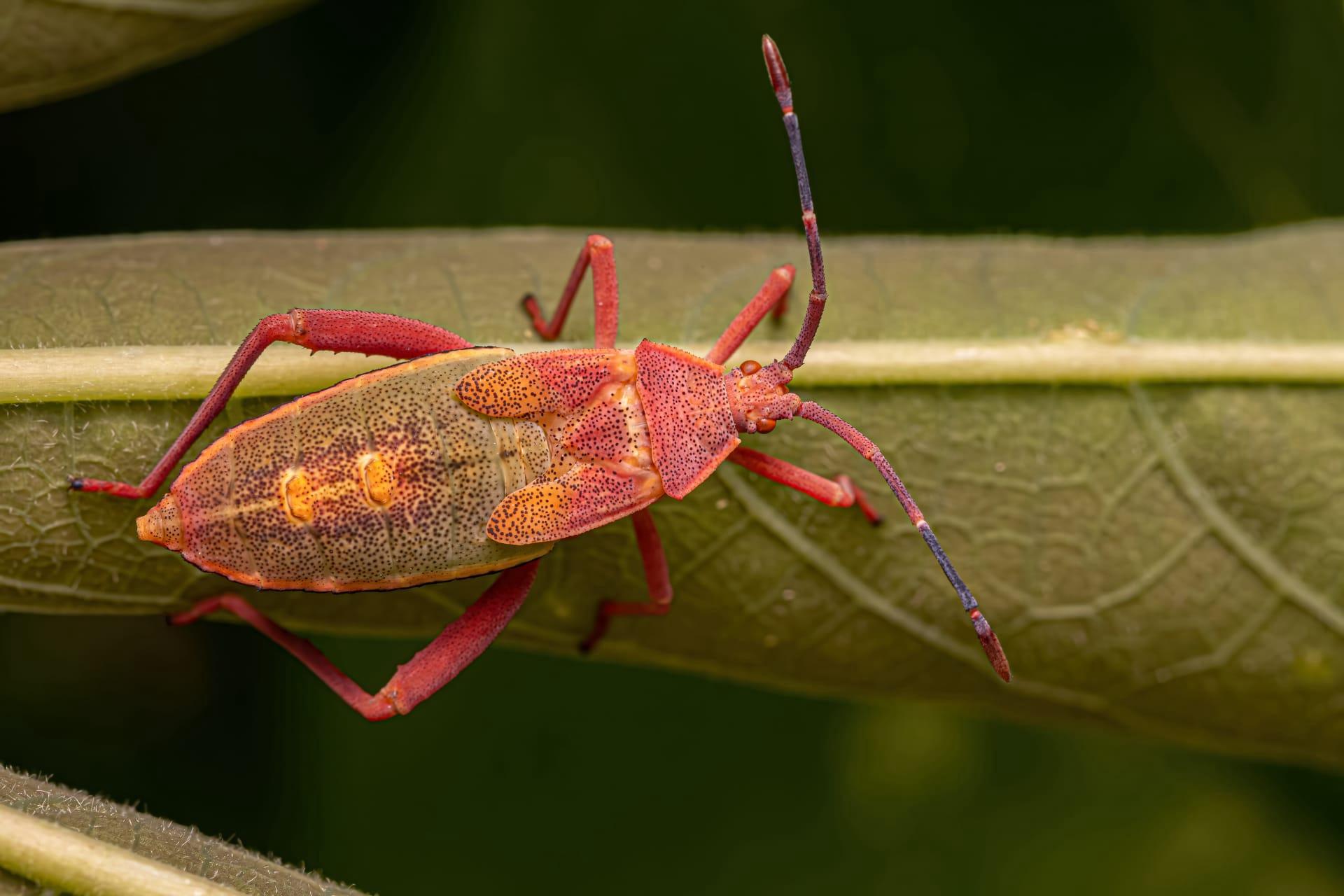Shield Bug Characteristics
- Home /
- Mini Encyclopedia /
- Animal /
- Shield Bug Characteristics
1
Shield bugs, scientifically known as members of the Pentatomidae family, are fascinating creatures with distinctive physical traits. They are most notable for their shield-like shape, hence the name. Typically, these bugs measure between 5 to 12 millimeters in length, depending on the species. They display a variety of colors and patterns, which often serve as camouflage or warning signals to predators. The lifespan of a shield bug varies, with most living about a year, undergoing multiple stages from nymph to adult.
One of the most remarkable organs of the shield bug is its scent glands, located on the underside of its thorax. These glands produce a foul-smelling liquid, which is used for defense against predators. This liquid is effective in deterring small mammalian and avian predators, and it's this very odor that often leads to their common name, "stink bug." The chemical composition of this liquid varies among species and can cause a staining effect or a burning sensation if it comes in contact with skin or mucous membranes.

2
Question: Why do shield bugs often gather in large numbers inside homes during certain seasons?
Answer: Shield bugs, particularly in temperate regions, are known for their seasonal invasions of homes. This behavior is primarily driven by their search for a warm, safe environment to overwinter. As cold weather approaches, they are attracted to the warmth of buildings and find their way inside through cracks and crevices. Once inside, they remain dormant, often in large numbers, until the warmth of spring reactivates them. This behavior is more common in certain species of shield bugs, like the Brown Marmorated Stink Bug, and occurs in regions where temperature fluctuations are significant.

3
Shield bugs exhibit unique movement characteristics. They are not particularly fast movers and often rely on their camouflaging coloration to avoid predators. However, they are capable of flight with wings that are usually tucked beneath their distinctive shield-like back. Their flight is typically not graceful or long-distance, often characterized as more of a flutter.
In terms of feeding habits, shield bugs are primarily herbivorous, feeding on a wide variety of plants. They use their piercing-sucking mouthparts to extract juices from plants, often causing damage to crops and garden plants. Some species can be quite destructive to agriculture, feeding on fruits, vegetables, and grains. Interestingly, their feeding method involves injecting saliva that contains enzymes into the plant, which helps in breaking down plant tissues for easier consumption.

4
Shield bugs thrive in a variety of environments, showing a particular preference for temperate and tropical climates. They are commonly found in gardens, forests, and agricultural fields, where they have access to abundant plant life for feeding. Some species have adapted to urban environments, living in parks and green spaces within cities.
Reproduction is a vital aspect of shield bug's life cycle. Most species reproduce sexually, with the female laying eggs on the underside of leaves or on stems. These eggs hatch into nymphs, which go through several instars, or growth stages, before becoming adults. The nymphs often resemble the adults but are smaller and lack fully developed wings. Parental care is generally minimal, with the eggs and nymphs being left to fend for themselves.

5
Book: "The World of Shield Bugs: Diversity and Behavior" by Dr. Helen E. Martin (UK, 2010). This book offers an in-depth look into the diverse world of shield bugs. Dr. Martin, an entomologist, explores various species across the globe, their unique behaviors, and their role in ecosystems. She also delves into the challenges posed by some species to agriculture, offering insights into management and control strategies.
Book: "Insects Unveiled: Shield Bugs" by Jonathan Y. Lee (USA, 2015). Lee, a science writer, takes a more general approach, providing an accessible and engaging introduction to shield bugs. The book covers their life cycle, feeding habits, and their fascinating defense mechanisms, including the use of scent glands. It's a great read for both enthusiasts and those new to the world of entomology.